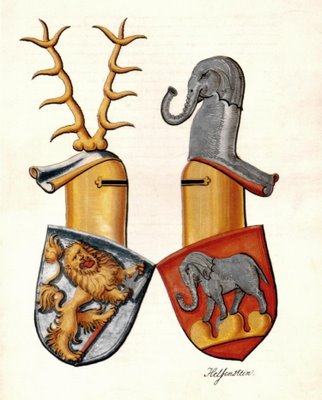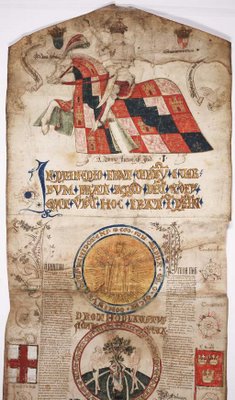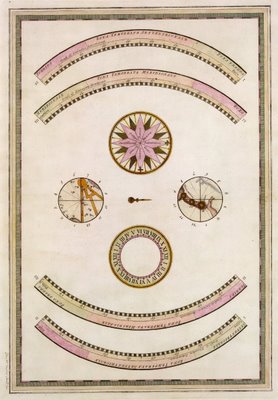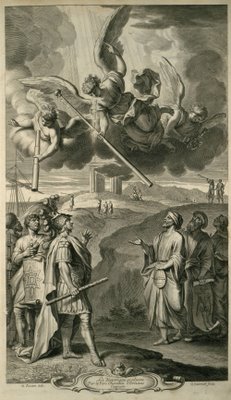"Nor rank, nor order, nor condition,
Imperial, lowly, or patrician,
Shall, when they see this volume, cry,
"The satirist has passed us by:"
But, with good humour, view our page
Depict the manners of the age." -Vide Work-

"By Frolic, Mirth, and Fancy gay,
Old Father Time is borne away."
Old Father Time is borne away."



The above illustrations are by [Isaac] Robert Cruikshank - elder brother to the famous George - from an 1825 book: 'The English Spy : An Original Work, Characteristic, Satirical, and Humorous, comprising Scenes and Sketches in every Rank of Society, being Portraits of the Illustrious, Eminent, Eccentric and Notorious'. The copiously illustrated book is available as a zip file from Project Gutenburg.
The author of the work is listed as 'Bernard Blackmantle', a pseudonym for the infamous blackmailer, Charles Molloy Westmacott, who would be lampooned the year after the publication of the book in handbills in which Westmacott was described thus:
"...2 feet 3 inches high, bandy legged, had broad thumbs, that he had served in the capacity of cad, scene shifter, colour grinder, reporter, spy, common informer, evesdropper, sweep, and deliverer of messages on the Liverpool stage, and that any body who would bring him to his disconsolate father, Charles Molloy, chimney-sweeper, Drury-lane, should receive the reward, &c."CM Westmacott was successful in his court case claiming libel.
I'm not sure of the sources but this post about 'The English Spy' is worth reading.


[I know that this brilliant illustration was completed by Peter Flötner in 1543. A random search turned up his pornographic alphabet in 'The erotics of type', and also inadvertently led (as so many roads happily do) to the excellent Figurative Alphabets post at Giornale Nuovo.]

"Just as the noble Zimmern family of Swabia was approaching its demise in the second half of the sixteenth century, two of its members produced an extraordinary family history that continues to fascinate readers today. Preserved in two closely related sixteenth-century manuscripts, this history of the Zimmern family has come down to us without a clear title or author."
Update: Thanks for comments below by Andreas - see here and here for some relevant information.


'A Prince of the Marquesas' and 'The Princess Pittenee' come from Harper's New Monthly Magazine, August 1859 - among the 'Galápagos Collection' at the University of Wisconsin Madison Zoological Museum.



These 2 details (from spliced screencaps in Zoomify) and complete first section are from the 15th century 'Chronicle of the History of the World from Creation to Woden, with a Genealogy of Edward IV' - known as 'Edward IV Roll', which is more of a scroll to my mind - are to be found among the Medieval Manuscripts in the Free Library of Philadelphia . I seem to recall reading somewhere that they have lately enlarged their online presence. I love the letter/font forms under the horse.

"Relief shown pictorially. Third of 4 sheets of gores to make up a globe. Includes Il Gemelli, Il Cancro and Il Leone. Features a particularly decorative projection of the heavens and is attractively colored, with the constellations shown in their classical forms. Appeared in the author's 'Nuovo Atlante Geografico Universale Delineate Suelle Ultime Osservazioni', Roma : Presso la Calcografia Camerale, 1792-1801."

Giovanni Maria Cassini: " "Ring sheet" of zodiacs and 2 polar calottes for mounting on globe furniture. Appeared in the author's 'Nuovo Atlante Geografico Universale Delineate Suelle Ultime Osservazioni' in 1792-1801."
If I'm understanding the notes correctly, these 2 works (among about a dozen) were published in 1792 in Cassini's 'Globo Celeste Calcolato Peril Corrente Anno Sulle Osservazioni de Sigg. Flamsteed e de la Caille' in which Cassini did his own engraving.

This is a map of the Apparent Intensity of the 1906
San Francisco earthquake using the Rossi-Forel scale.
San Francisco earthquake using the Rossi-Forel scale.

These seismic readings from around the world taken in 1906 are from the same San Francisco earthquake book as above, the details for which I didn't catch when I jagged the image. It's interesting to see which world locations were able to register the event. {previously: Earthquake Images}
The Cassini and earthquake images all come from the fantastic David Rumsey site that has uploaded another 1100+ images in the last few weeks. It has taken me a loooong time but I've finally decided that I like using the Insight browser, having discovered how to download enlarged images without having to splice screen captures; although images can be displayed in javascript. The '4 sheets of gores' image above was made from spliced screencaps from a downloaded MrSid formatted file - I just wanted to see how it turned out converted to jpeg format: not too shabby really.

'Presented to the Princess of Wales on her marriage by the ladies of Victoria'; an engraving by Frederick Grosse, 1863. The Princess of Wales would later become Queen Alexandra to King Edward VII. (I'm still not sure if this is an engraving of the present or the engraving was the present)

'The Patent Globes' by Thomas Jefferys.
Diagrams of terrestrial and celestial globes.
From: 'New and Complete Dictionary of Arts and Sciences' 1754.
Diagrams of terrestrial and celestial globes.
From: 'New and Complete Dictionary of Arts and Sciences' 1754.

"'Ein Marquezas Insulaner aus Nukahiwah'. Punctier instrument. Feodor Petrowitsch ein geb" Probably the first decade of the 19th century. (Tattooing in the Marquesas Islands)
The above 3 images were randomly selected from the extensive National Library of Australia Digital Collections (probably from a search on 'engraving' in Pictures). The NLA and other major Australian repositories can all be accessed from the PictureAustralia website.



Frontpiece and 2 very early lunar map images by Chérubin d'Orléans IN: 'La Dioptrique Oculaire, ou la Théorique, la Positive, et la Mechanique, de l'Oculaire Dioptrique en Toutes ses Especes' from 1671, digitized in full by Université Louis Pasteur.
The lunar topography images are absolutely definitely derived from Johannes Hevelius, whose 'Selenographia' (previously briefly mentioned: I, II) from 1647 established lunar cartography as a scientific discipline. Having said that, Chérubin d'Orléans, who was no slouch in the field of optics (credited at times with, among other things, the invention of the binocular telescope) and appears to have been an assiduous scientist, may have modified the Hevelius moon maps from his own observations. It's a pity that the whole of 'Selenographia' is not, to my knowledge, online as yet.
Searching around on 'Chérubin d'Orléans' brought me back to Dr David A. Fleishman's Antique Spectacles site - a great timesink. From time to time I send David old illustrations with pictures of glasses and pince-nez etc that I come across to add to the great collection he has developed. [More about David from the Wall Street Journal]

Glyph Jockey has uploaded some images from an undated (?~1890-1910) Dom Bénédictine

Jalilrasouli Mohammad is one of many Arabic calligraphy artists at Qoqnoos ['Iranian Fames Artists and Artistic Works']. {Previously: zoomorphic calligraphy.} I found Qoqnoos indirectly via the great 'Iranian Typography Now' post at PingMag earlier this month.

'Fonte des Statues Equestres, Figure Equestre de Cire Avec les Jets, les Events et les Ajouts des Cire'. I'm guessing this engraving depicts the method by which a wax mold of a cast iron statue can be made. Mid-to-late 17th century perhaps. Lightning and/or The Matrix came to mind.

The above 2 images come from the Alkmaar Archives in Holland. They had from memory about 30 images from their rare books/prints collection available. It seems many Dutch repositories are using the same digitizing company in which a javascript console is employed to present the images. One side affect (to me anyway) is that decent sized images can't be downloaded without taking awkward screencaps (as was done above). But you can download a large image for €6. To obtain further information about the images - such as their name etc - requires registration but I'm not sure if that also requires a fee. I've seen about 6 similar sites recently: it's all about establishing a revenue stream.


Illustrated-History.org have quite a few years worth of the Italian weekly illustrated magazine/newspaper 'La Domenica del Corriere' available. This is a very cool site, perched somewhere between kitsch and culture, and worth a look. They have large images (freely) available - search on world location 'luoghi', author 'autore' or narrow it down to a year with the advanced search option 'ricerca avanzata'. The Abominable Snowman is from 1956 and the Italian airship/dirigible is from 1926.






There's a chance I've posted 1 or 2 of these Japanese rare book images before (like that isn't an avocational hazard). Previously I've gone to the National Diet Library and copied kanji ideograms into search fields to trawl for eclectic imagery.
I'm grateful to the Armchair Aquarium (or was it the Annexe?) for pointing out that the National Diet Library have added a new-ish landing page for their natural history holdings (I doubt it leads to the complete online catalogue but still..). Although the landing page is in japanese, it still makes it much, much easier to browse the eccentric and wonderful images among their digitized material. Click everywhere. Sometimes you will find complete books and sometimes you'll find pages of similar subject matter. This Metafilter post contains some direct links to historic scientific books if you want the random serendipity removed from the equation. I think I've probably posted most of the weirdest material previously (see here and/or here).
All of the above images, which have been variously cleaned, dabbed and tweaked in accordance with the adage relating to antique furniture restoration - 'as little as possible' - can be enlarged to varying degrees by clicking on them.
Other thangs (which I've not looked through in depth yet)...
- Some back issues of The Journal of Artists' Books are available for download as pdf files.
- "To celebrate its 60th birthday, the Arts Council collection of post-war British art will be made available for all to enjoy on the Internet. The collection, formed in 1946 and administered by the Hayward Gallery since 1987, encompasses some 7,500 works by over 2,000 artists." [via 24 Hour Museum]
- ¡del Corazón! Latino Voices in American Art at the Smithsonian Institution [via Eye Level - a blog produced by the Smithsonian American Arts Museum that I have assiduously followed since it began - at the same time as BibliOdyssey].
- Vispo {new to me} - interactive, visual and sound poetry by Jim Andrews [via dbqp: visualizing poetics]
- 'The Société Anonyme: Modernism for America': an exhibition organised by the Yale University Art Gallery (great flash site). I think this link comes via Wood s Lot. But even if it doesn't I have a feeling Mark will like the site anyway.
- See! I wasn't laid out on eggnog. Actually, it's quite amusing to view the site statistics when I don't post for a few days. By this I mean that I can hear the disappointed *sighs* when people venture into the BibliOdyssey del.icio.us links and enter the site via 'women'. Heh. On that point, if you are not a fan of rss but you do have a del.icio.us online bookmarks account, some people find it easy to subscribe to the BibliOdyssey bookmarks (click 'subscriptions' at the top of your own del.icio.us page, then 'edit' and then add 'BibliOdyssey' to the bottom box) - I summarize and categorize each entry at del.icio.us at about the same time as I publish the blog entry here. It lets you decide if the entry at BibliOdyssey is of interest and worth visiting or not as well as letting you know when the site has been updated. I only started doing it to help me find things that escape the blogger search engine, but I think it works as a handy alternative way to follow a site.
No comments:
Post a Comment